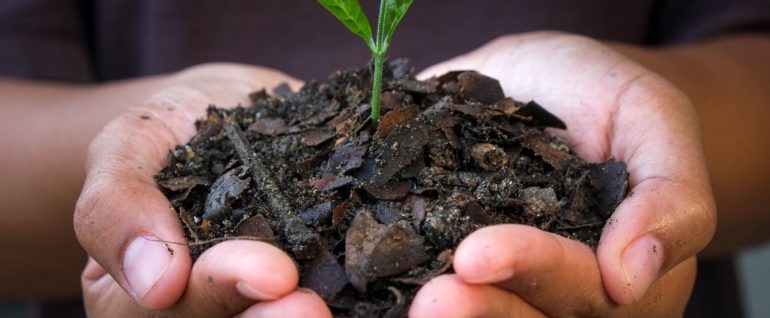Biochar technology is showing real potential for helping to mitigate climate change as well as reducing waste and producing energy as a byproduct. But what exactly is biochar and what is it made of?
Biochar, or “black gold”, is a lightweight black residue made of carbon and ashes, remaining after heating biomass in a controlled process called pyrolysis. It is rich in pyrogenic carbon and can endure in soil for thousands of years.
Although it looks a lot like common charcoal, biochar is produced using a specific process to reduce contamination and safely store carbon. During pyrolysis organic materials, such as wood chips, leaf litter or dead plants, are burned in a container with very little oxygen. As the materials burn, they release little to no toxic gases. During the pyrolysis process, the organic material is converted into biochar, a stable form of carbon that cannot easily escape into the atmosphere. The energy or heat created during pyrolysis can also be captured and used as a form of clean energy.
In terms of physical attributes, biochar is black, highly porous, lightweight, fine-grained and has a large surface area. Approximately 70% of its composition is carbon. The remainder consists of predominantly of nitrogen, hydrogen and oxygen. Biochar’s chemical composition varies depending on the feedstocks used to make it and methods used to heat it.
The concept of biochar is rooted in an ancient Amazonian practice.
Although biochar technology is considered a more recent strategy for carbon sequestration, the practice of adding charred biomass to improve soil quality is not new. This process is modelled after a 2,000-year-old practice in the Amazonian basin, where indigenous people created areas of rich, fertile soils called terra preta (meaning ‘dark earth’).
Whether these soils were intentionally made or are simply a by-product of farming and/or cooking practices, is still unclear. But one thing’s for sure: the fertility of terra preta is significantly higher than the otherwise famously infertile soils of the Amazon.
Modern biochar production offers significant opportunities to pursue carbon neutrality and promote the green transition, for example, in the construction and infrastructure sectors. In the construction sector, biochar can be used in green areas to improve the soil, and to treat water and urban runoffs. It can also replace fossil coal and coke in the steel industry. In the agriculture sector, soil degradation is a major concern, and researchers suggest applying biochar to degraded soils will enhance its quality, reducing the need for fertilisers, which in turn also helps to reduce greenhouse gas production.
Moreover, the new industrial market for this black gold is steadily growing, which also means the need for efficient biochar production will increase strongly.
As many industries accelerate measures to support the green transition to cleaner operations and carbon-neutral goals, biochar has the potential to be an essential part of the mix.
According to Teeside University, biochar’s projected annual growth rate is 14.5% – the global biochar market size was $1.48billion in 2018 and is expected to reach $3.82billion by 2025.
While efforts in manufacturing biochar have increased in the last decade there is still need for advancing the manufacturing processes (pyrolysis) to improve the quality and quantity of biochar that is being produced.
Every stage of biochar production is crucial to the quality of the result. Pre-processing plays a significant role in ensuring the biomass is sufficiently dry and stabilized before pyrolysis. The dryer the biomass is before pyrolysis, the more you can expect energy savings while reducing operating costs and carbon footprint.
There is a good reason why biochar is expected to be the next big thing to help curb carbon emissions – it offers the perfect solution in projects committed to carbon neutral or carbon negative goals.
Biochar is a carbon sink that absorbs more carbon from the atmosphere than it releases. One ton of biochar absorbs 3.7 tons of carbon dioxide. For example, the emissions of an average passenger car are around 2100 kg CO₂/year. One ton of biochar offsets the annual emissions of about two passenger cars.
Biochar may seem like a simple material, but it can help solve a variety of global problems simultaneously. For instance, the process by which it’s manufactured may help sequester a billion tons of carbon annually and hold it in the soil for thousands of years, where it’s most beneficial.
During the production of biochar, clean and renewable energy is produced as a byproduct—this can be used as an alternative to burning fossil fuels, which has exacerbated global warming by adding greenhouse gases to the atmosphere.
Biochar production is a carbon-negative process, which means that it actually reduces CO₂ in the atmosphere.
It’s vital that we raise the profile of this black gold on a global scale. By utilising biochar in the carbon offsetting system, we can help to increase production capacity for both biochar and carbon sequestration, offering a large-scale commercial solution that allows CO₂ sequestration at a reasonable price.
If you are interested in investing in technology that will fast track the production of biochar, please contact investment@pyrolysise.com

